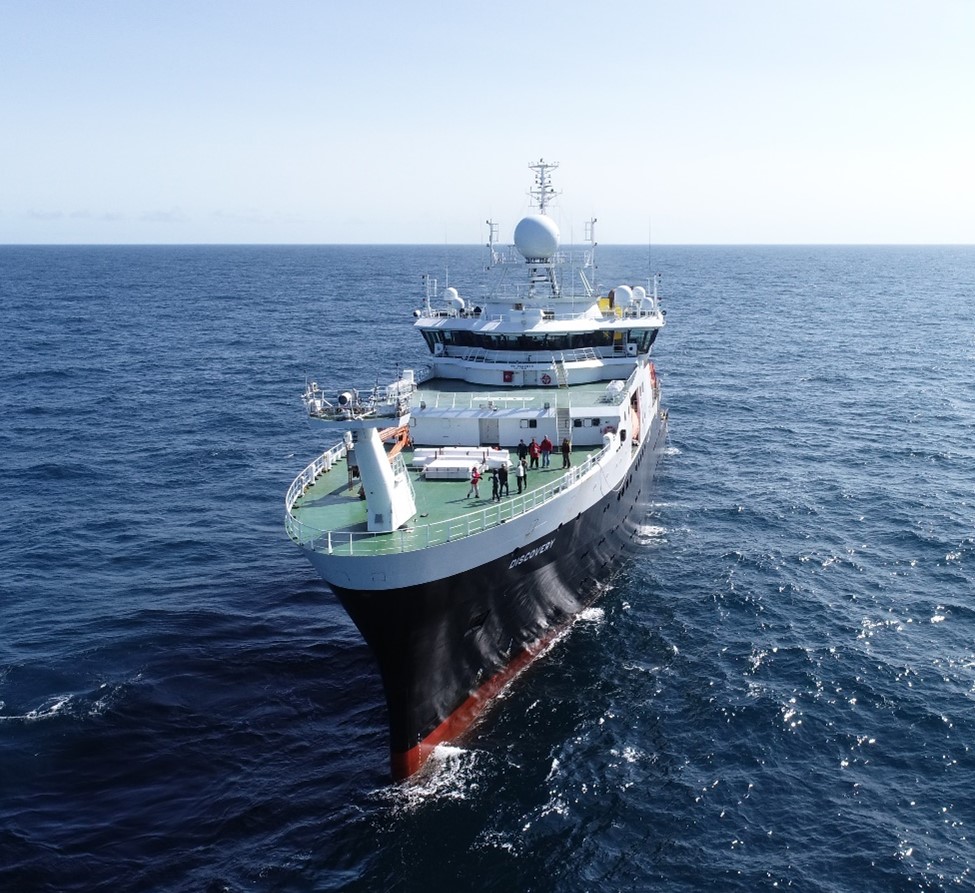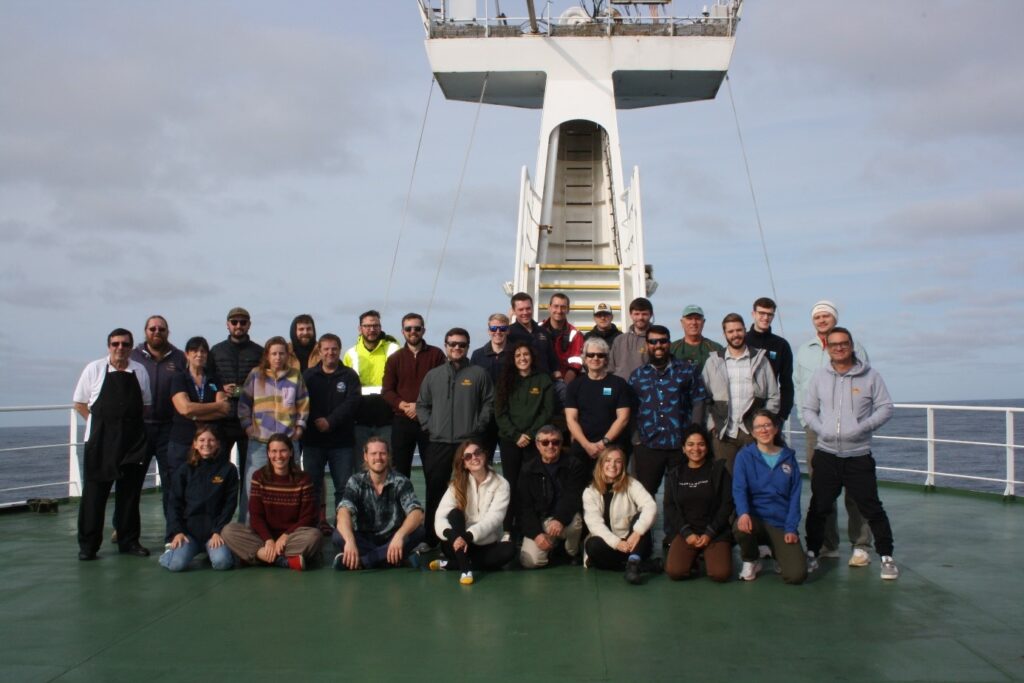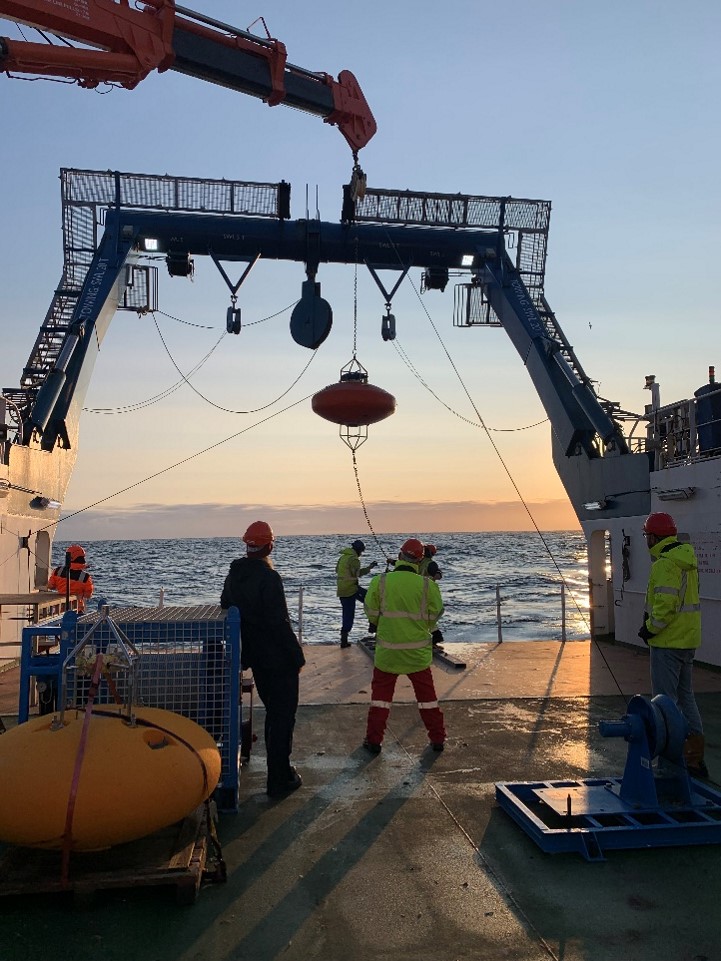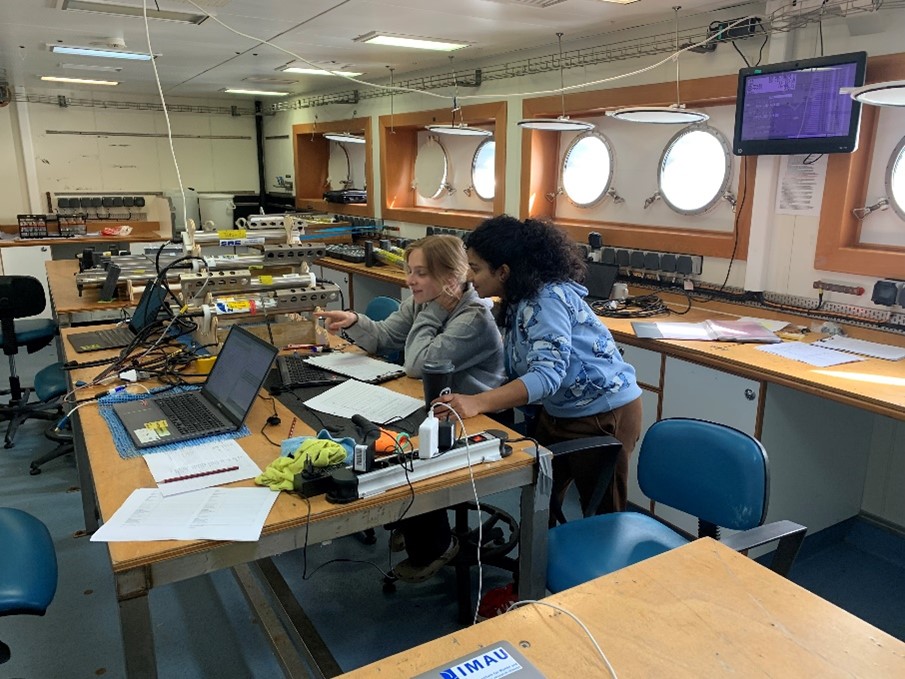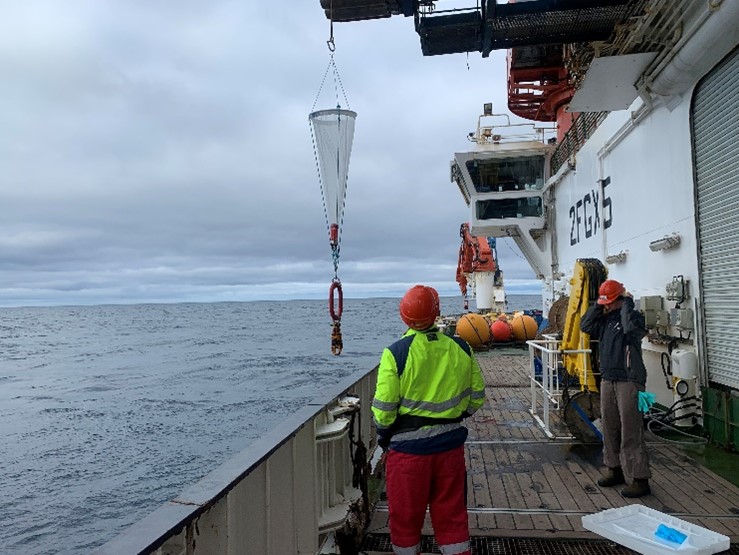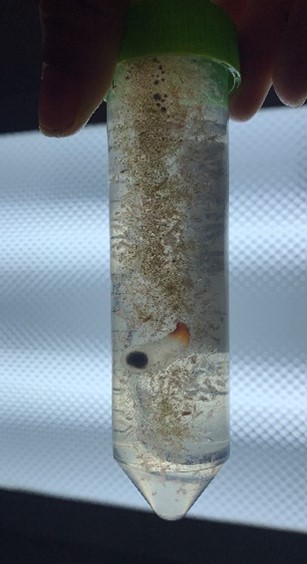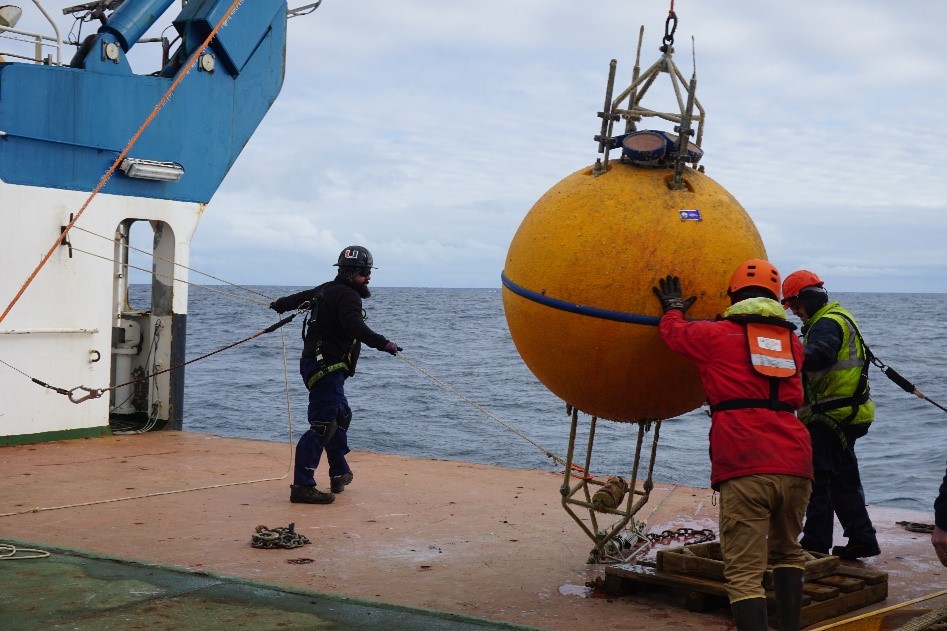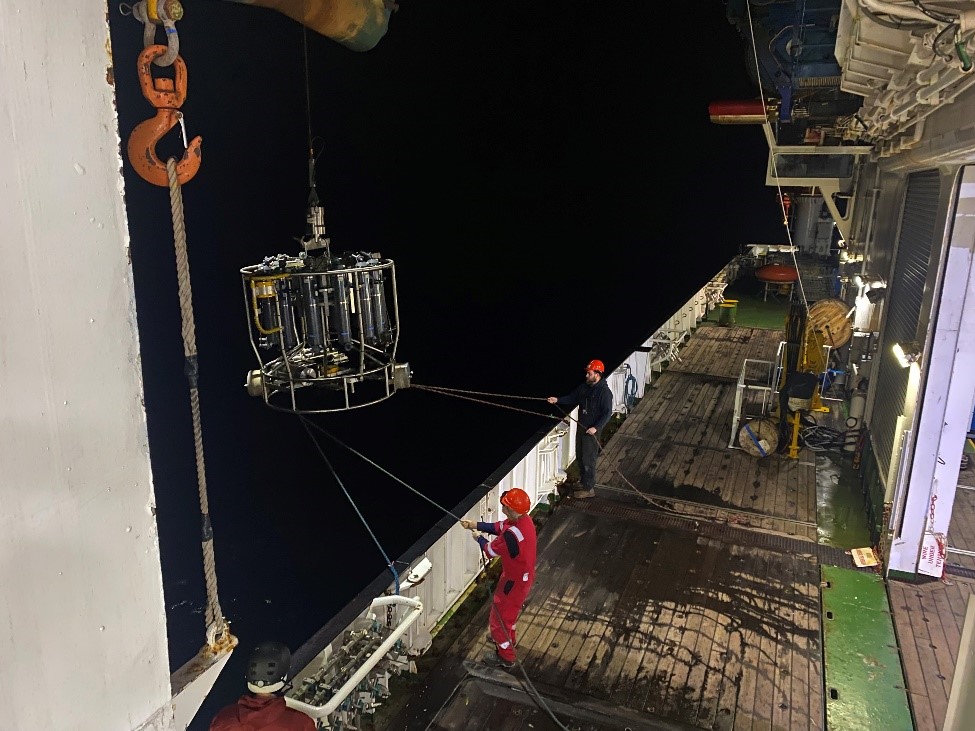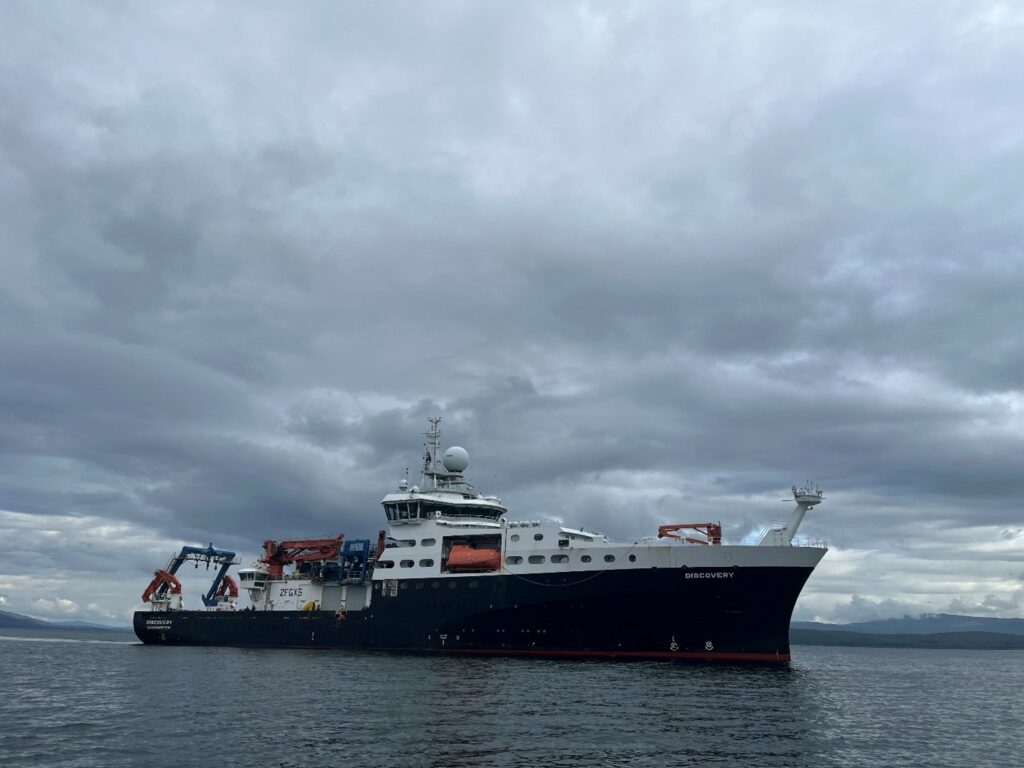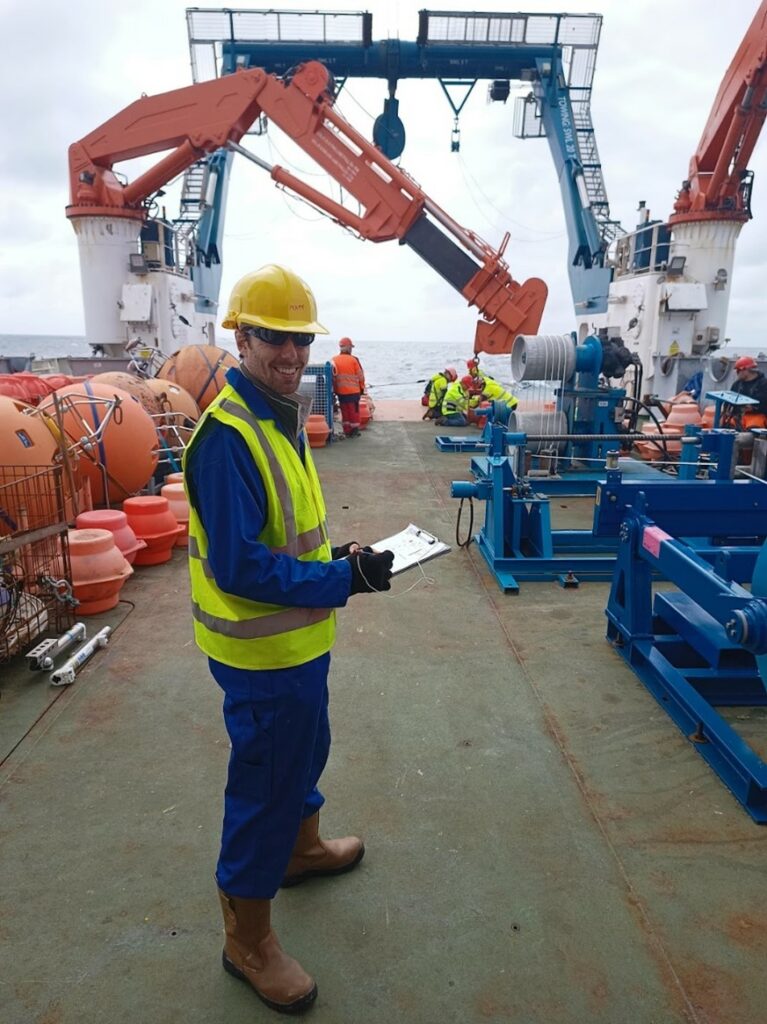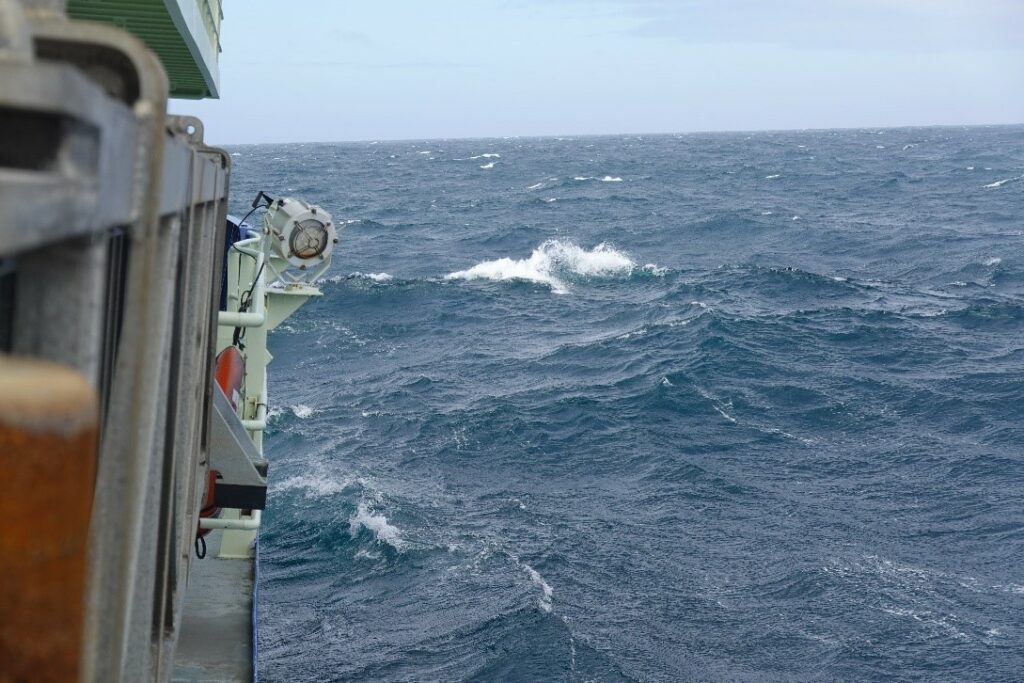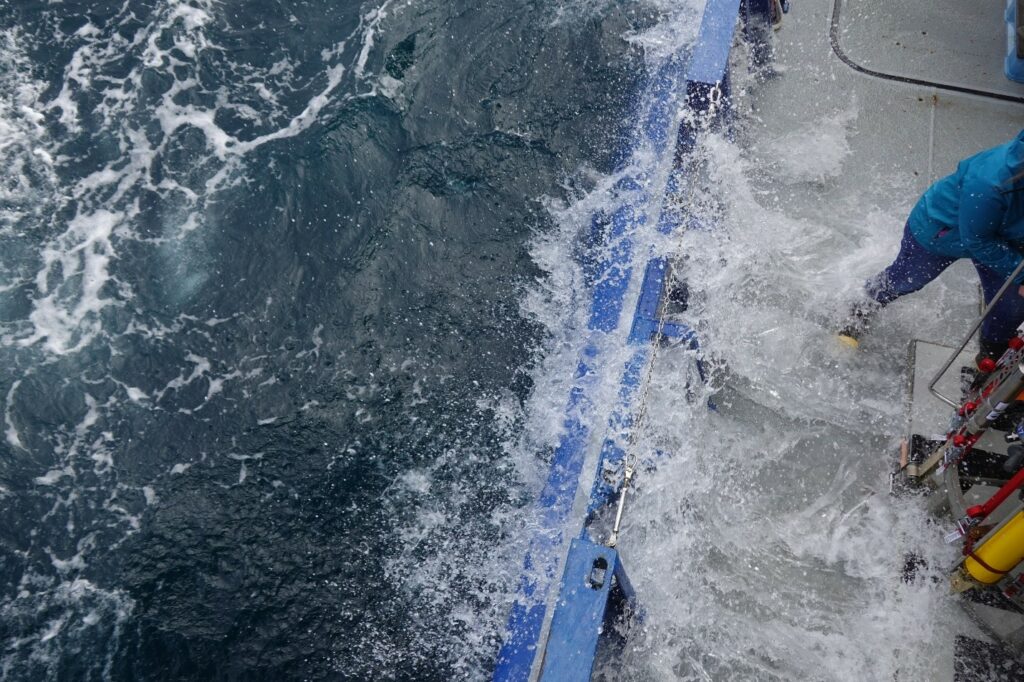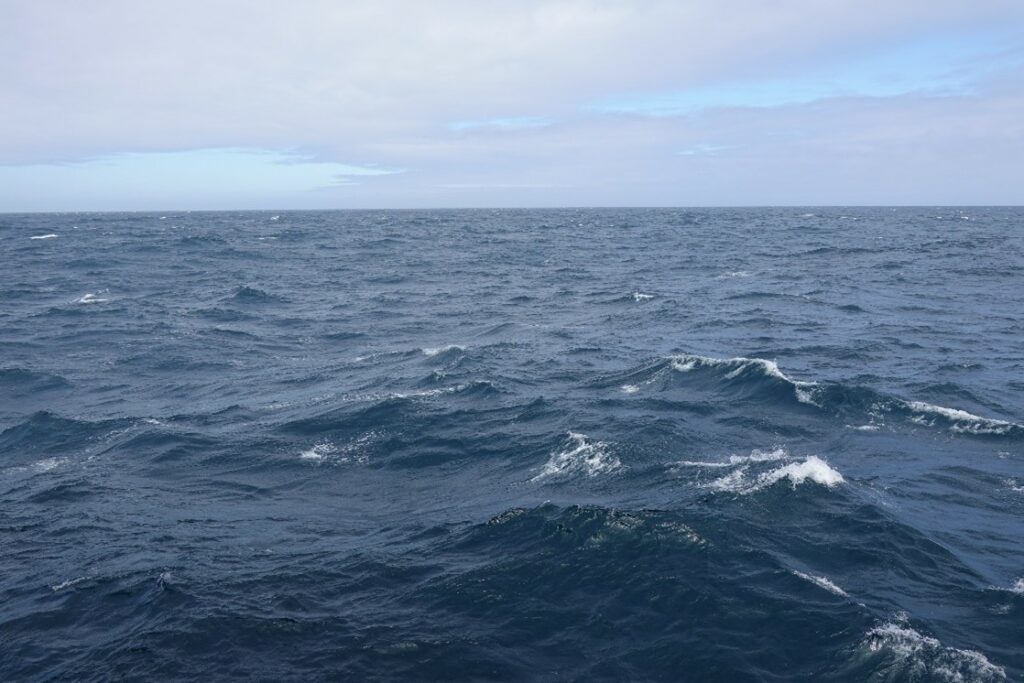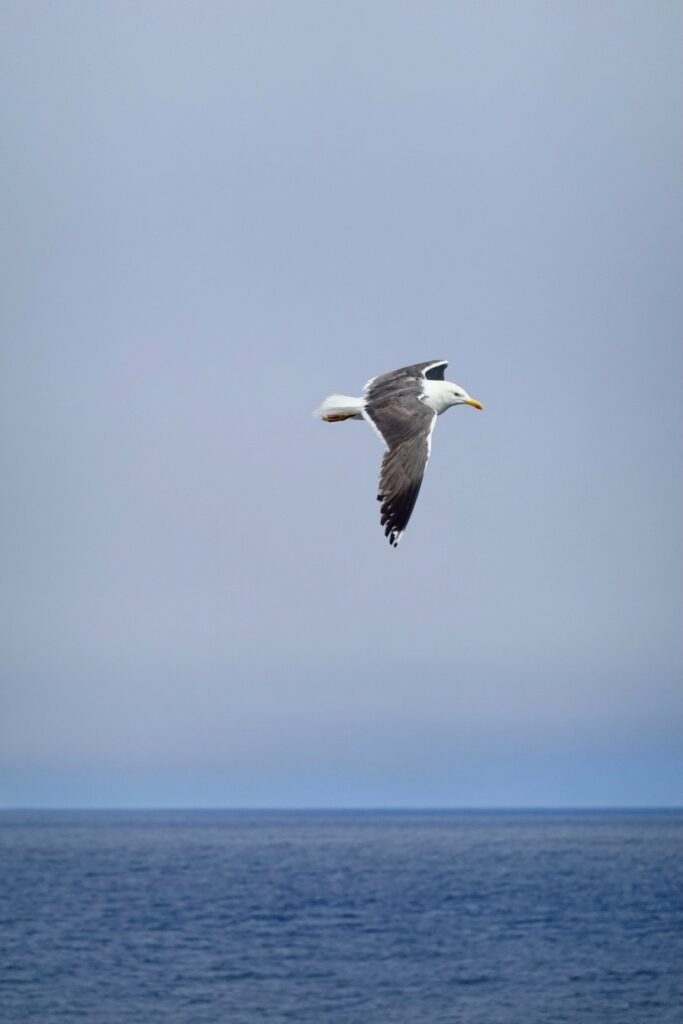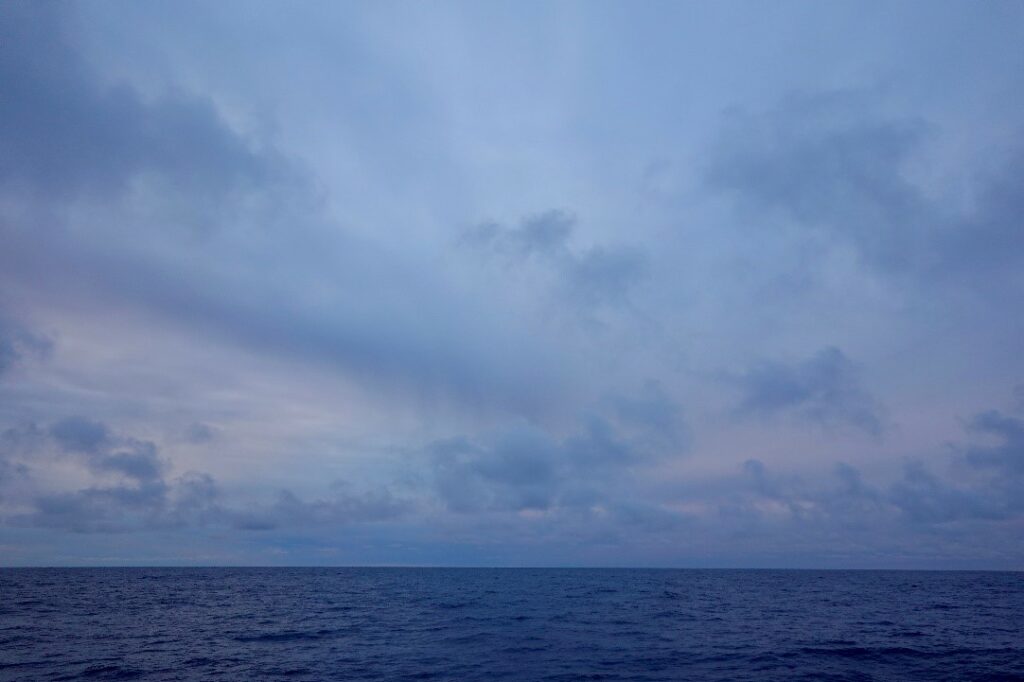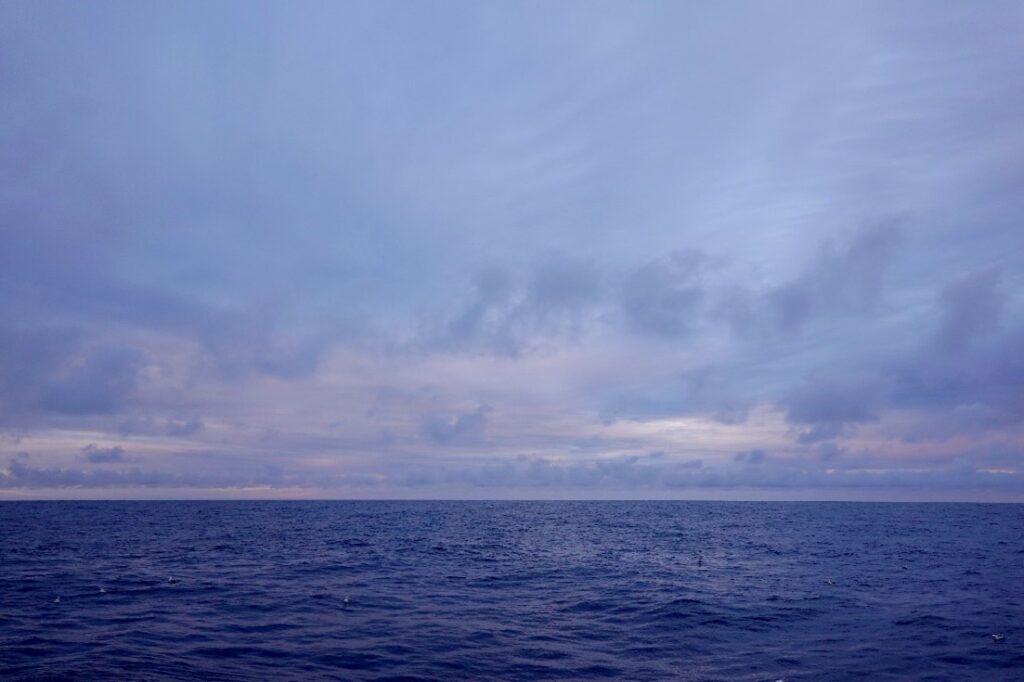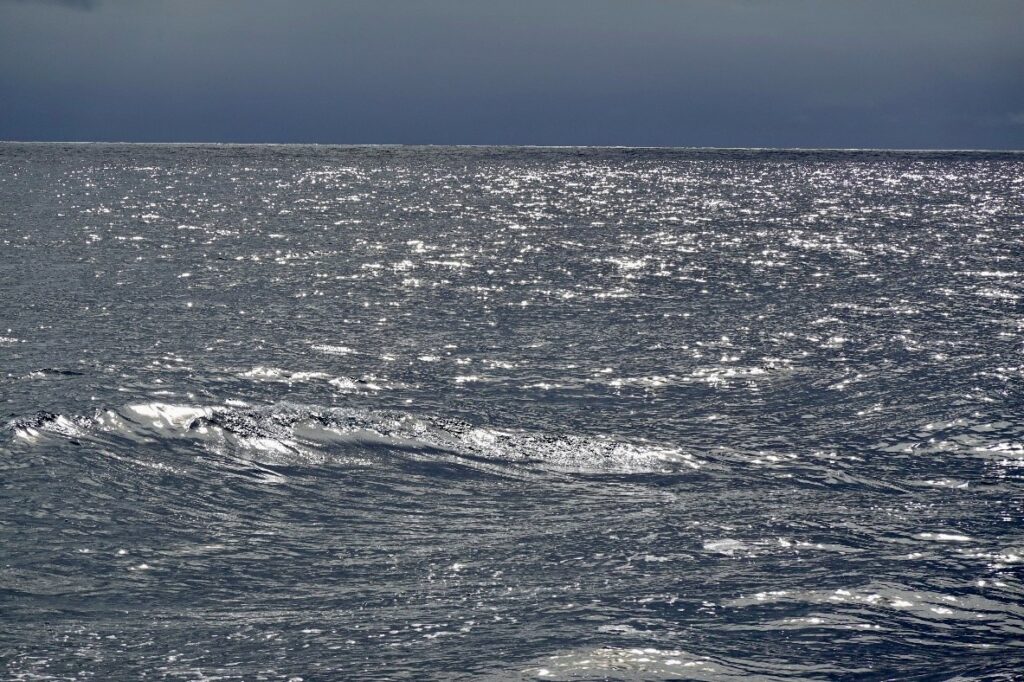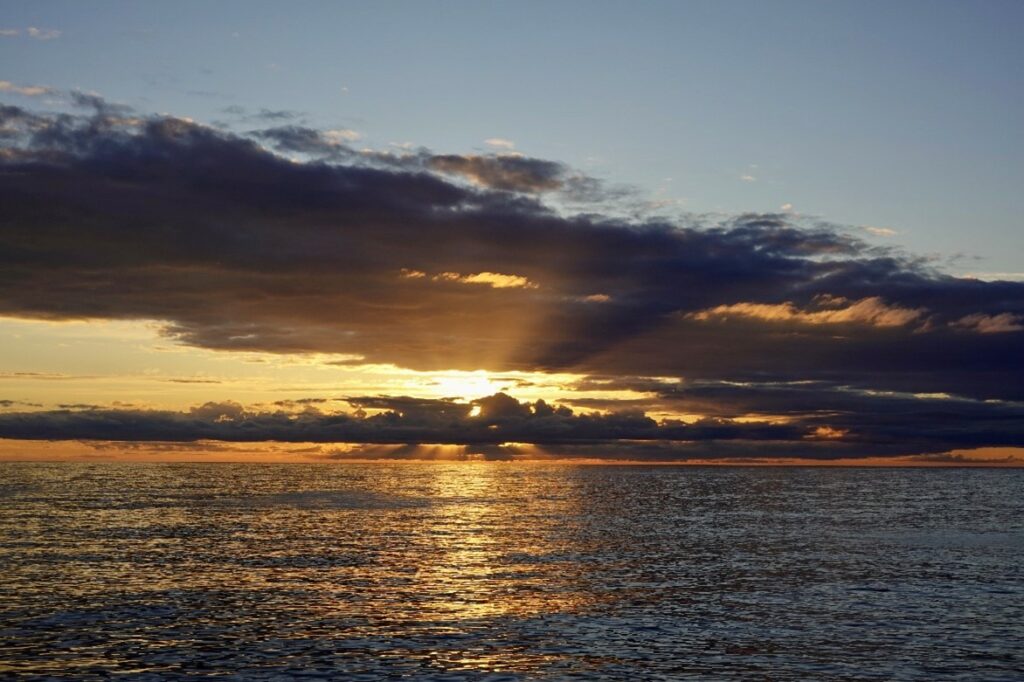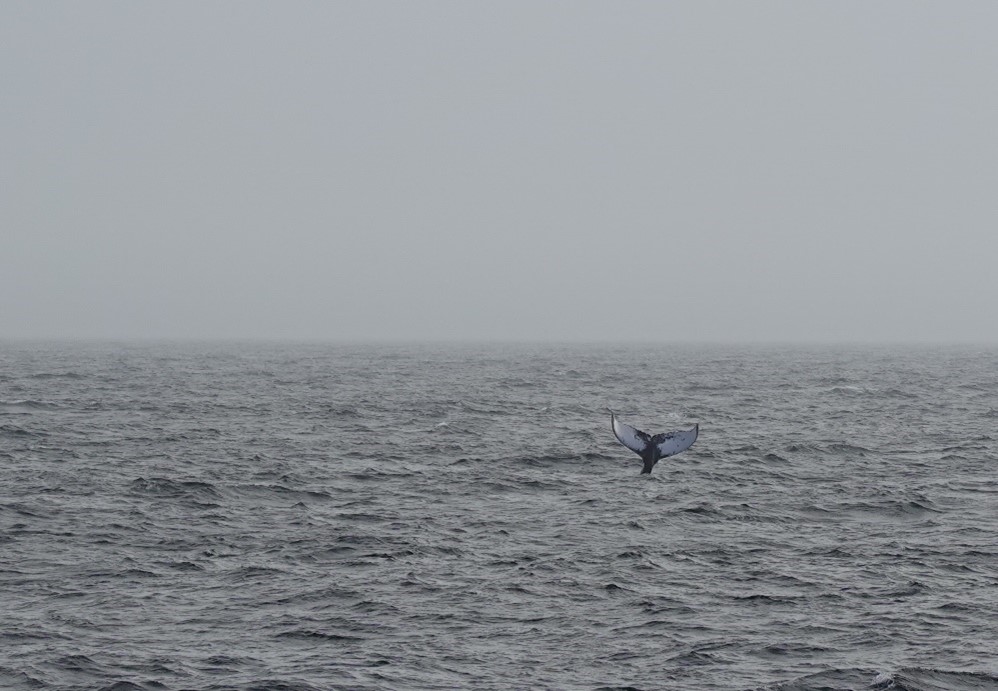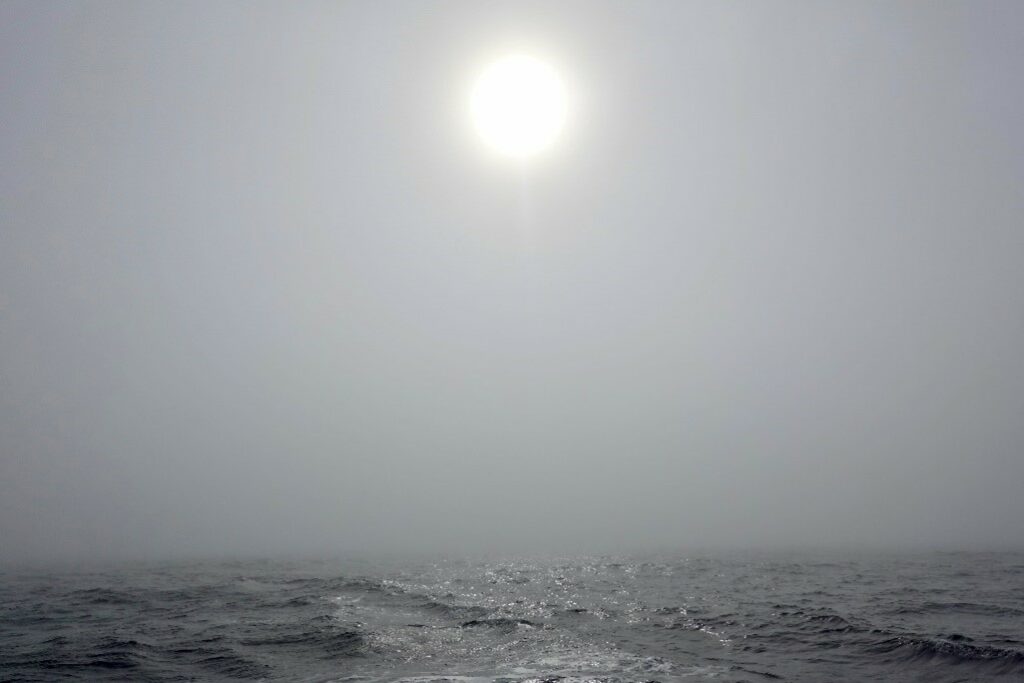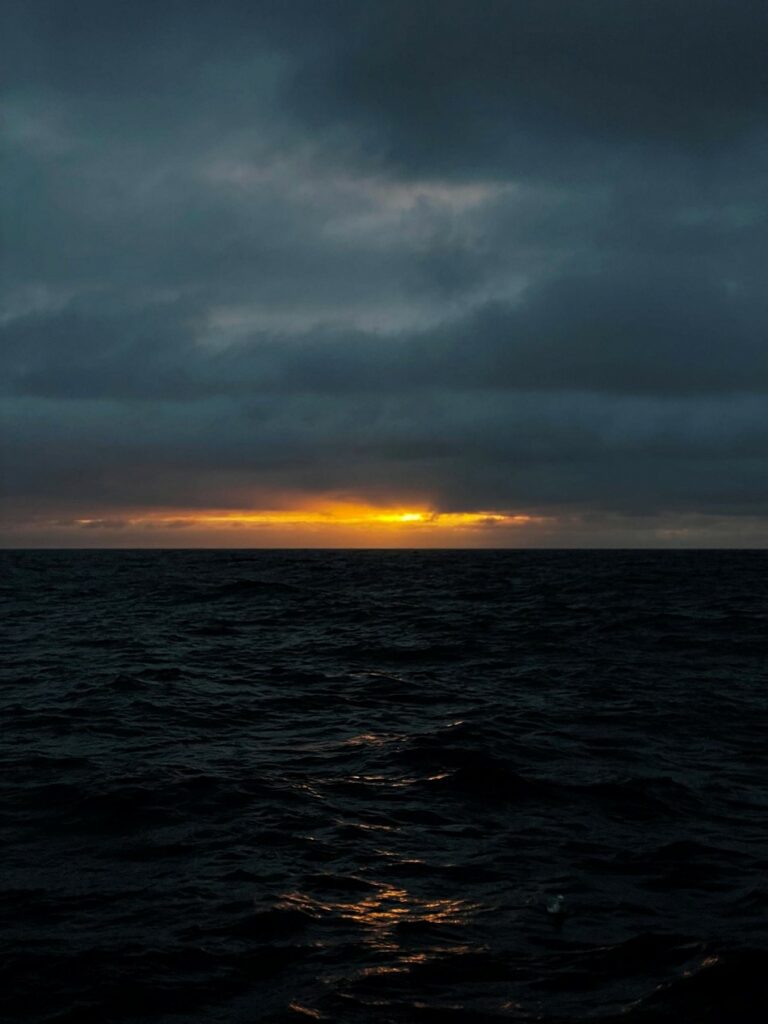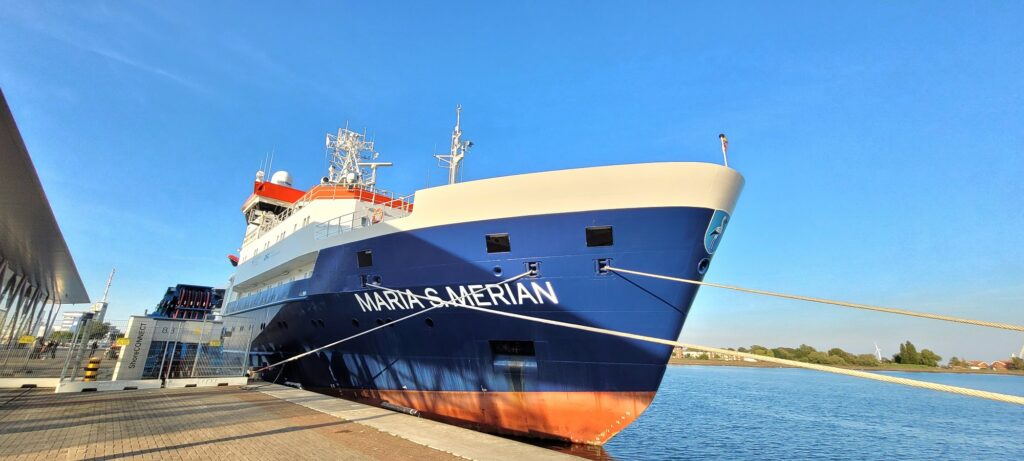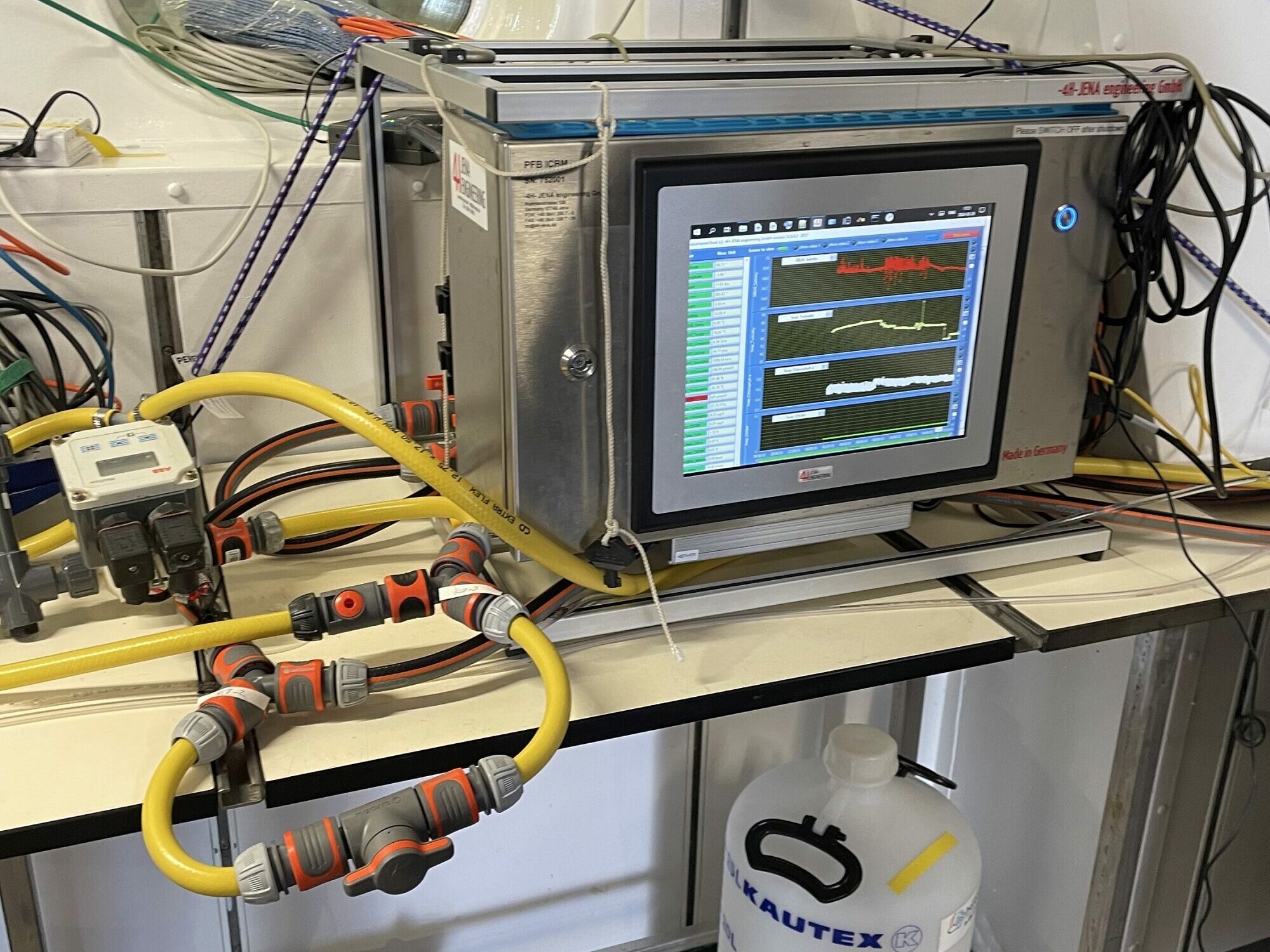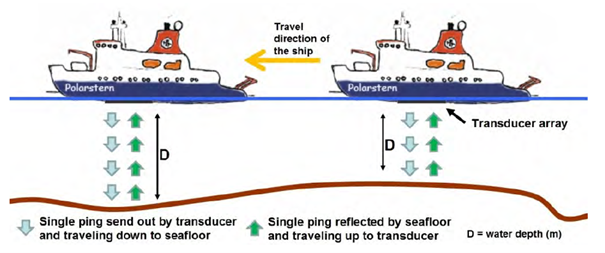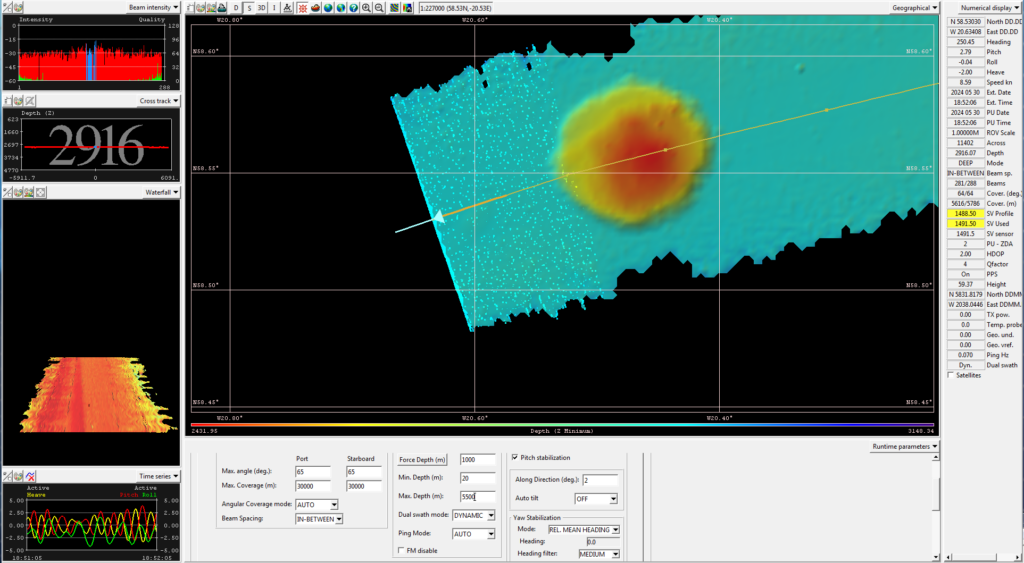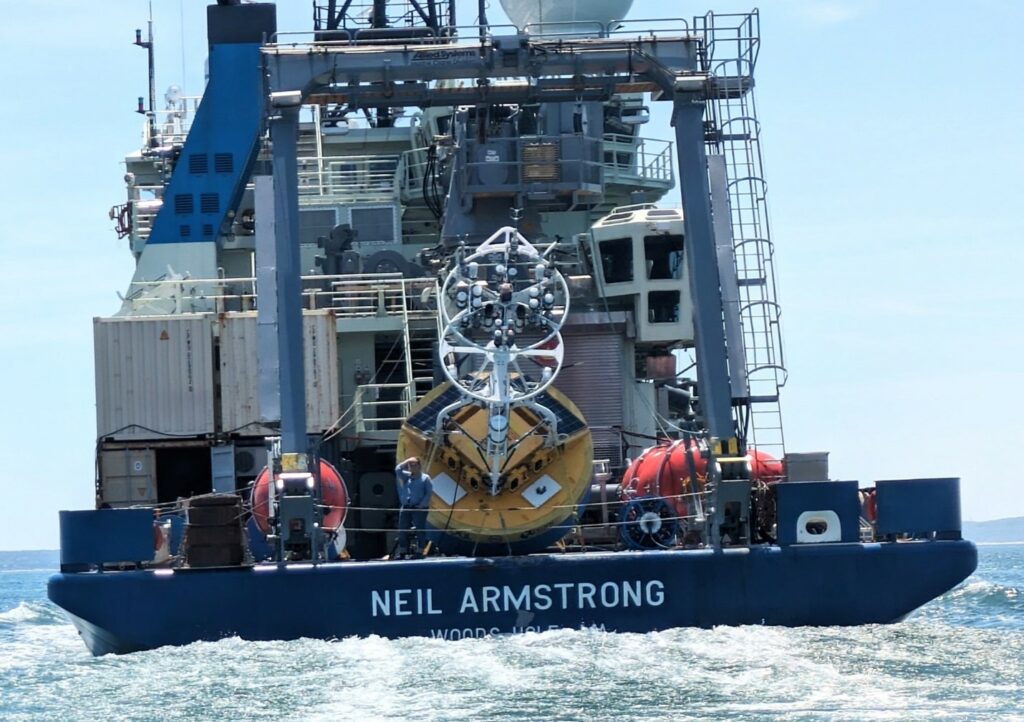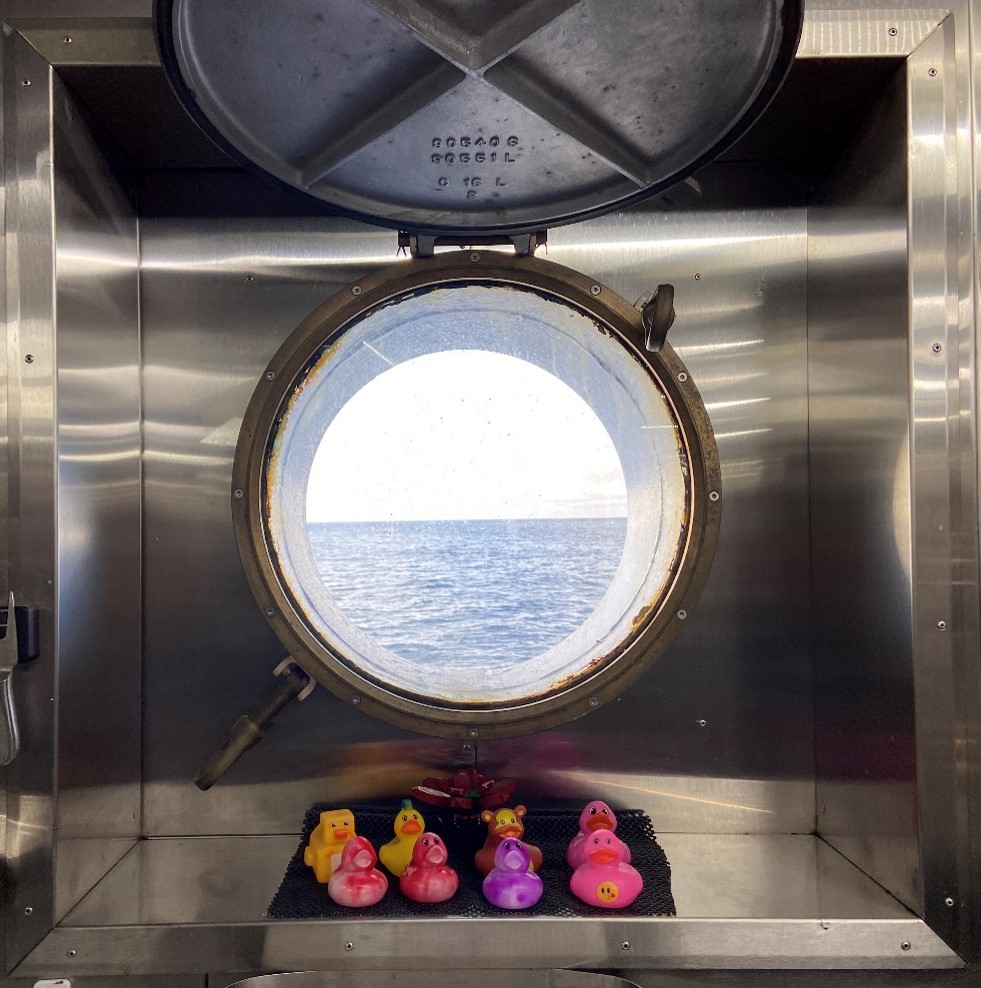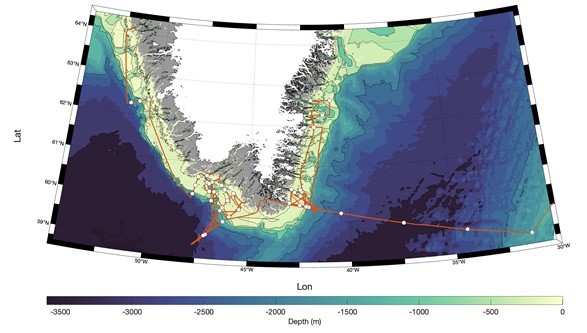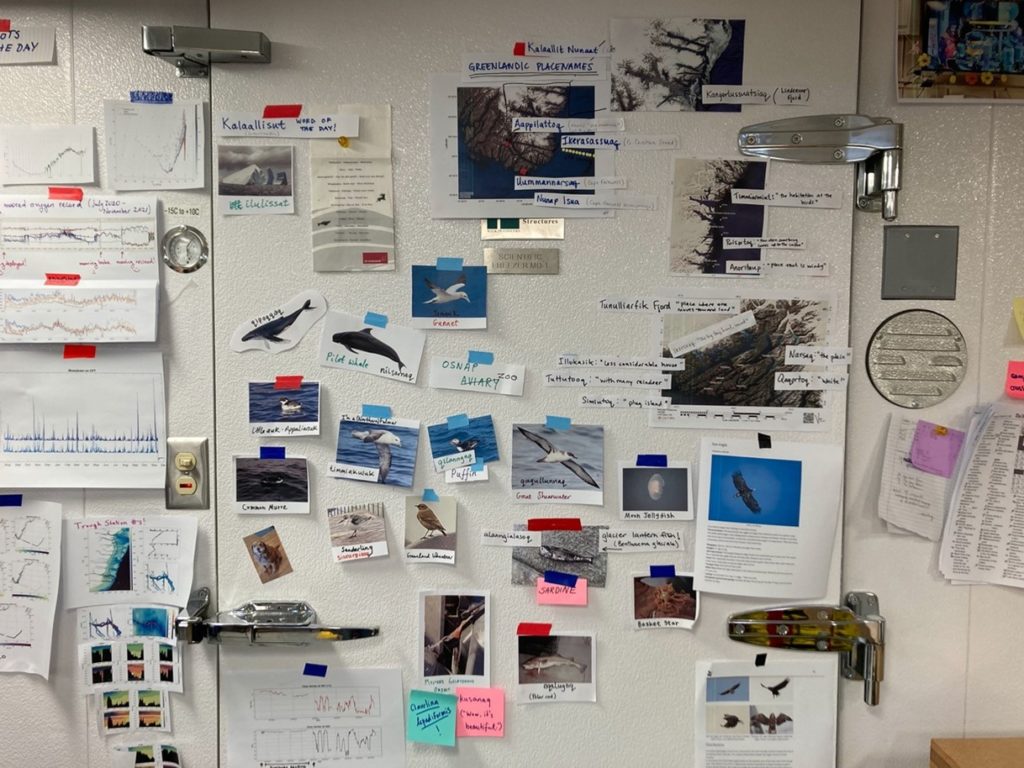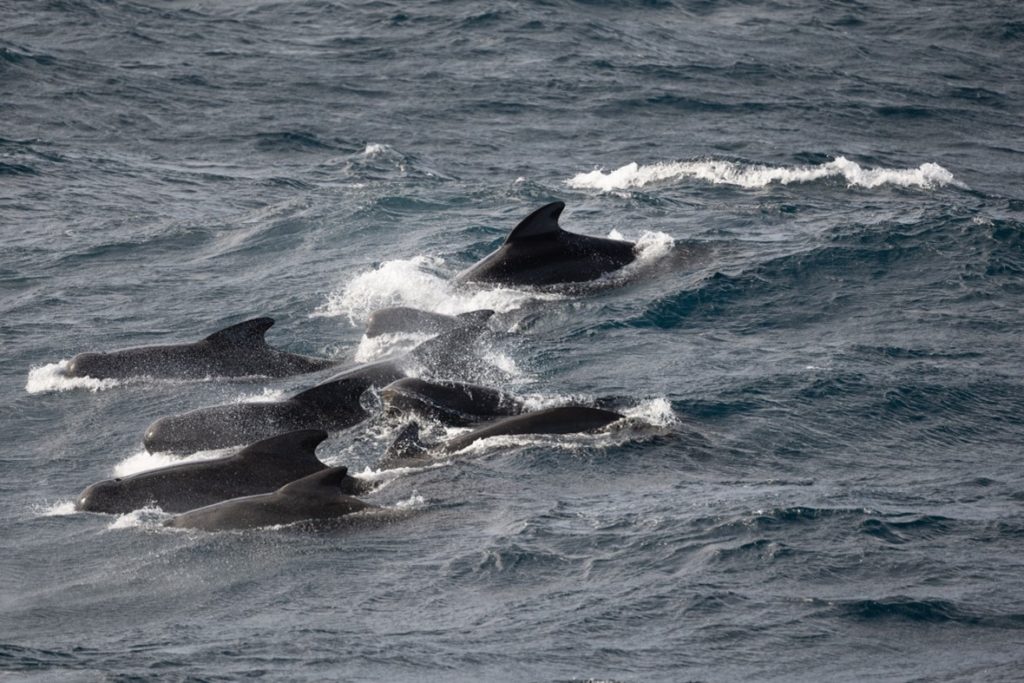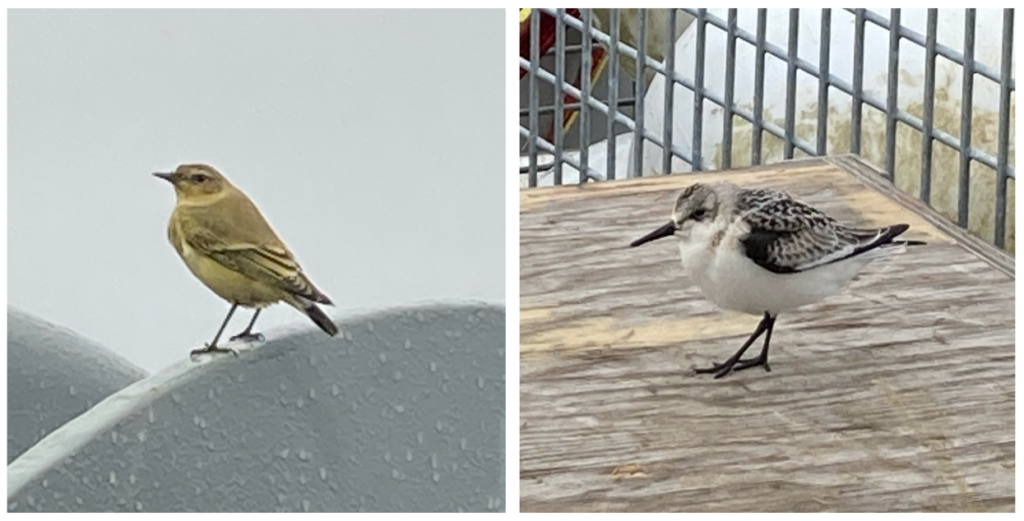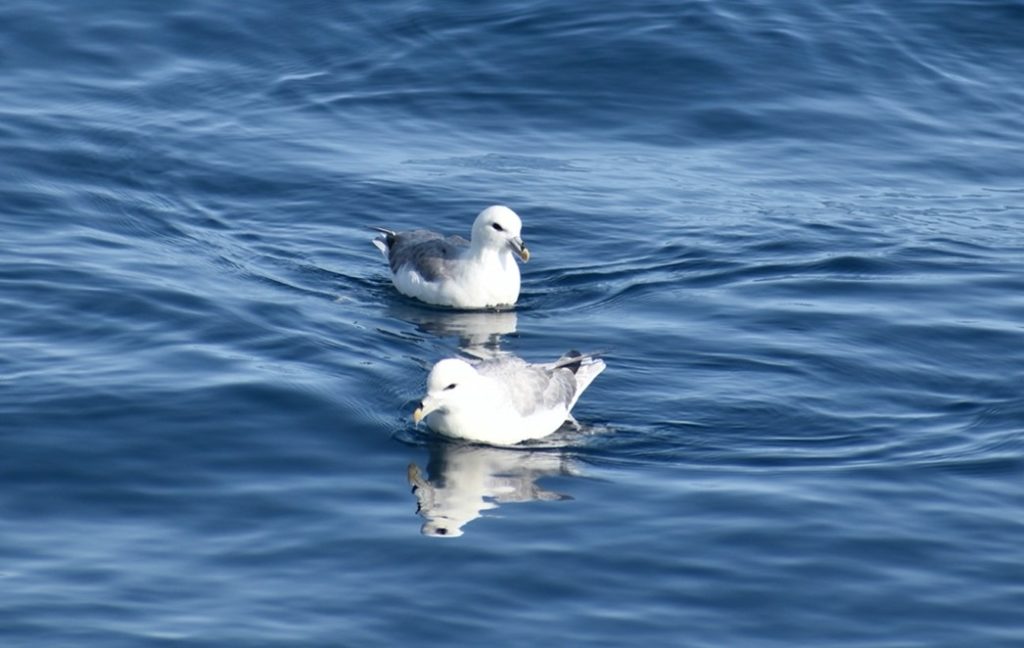Hello there! My name is Charlotte and I’m part of the science team onboard the RRS Discovery, on expedition DY181 to the Ellet Array. In this blog I tell you who I am, what I’m doing here, and some anecdotes of my experiences so far… I hope you enjoy reading!

Who Are You/What Do You Do on Land?
I am a postgraduate student on the NERC DTP at the University of Oxford, based in the Department of Earth Sciences. My research involves using model simulations to examine the mechanisms driving ocean circulation in the Arctic, and investigating how these processes will vary with predicted warming and freshening at the sea surface. This is important because water masses modified in the Arctic are ultimately exported into the North Atlantic, and play a significant role in the large-scale ocean circulation, which is fundamental in setting the global distribution of heat and rainfall.
What is your role onboard?
I am part of the physics watch, and a major aspect of my role is taking salinity samples from the CTD. A CTD is a scientific instrument used to study how physical and biogeochemical properties change throughout the water column. It consists of a steel frame (a rosette) fitted with a plethora of sensors to measure salinity (conductivity), temperature, and pressure (depth). Additional sensors are often also included that measure parameters including oxygen, PAR, and transmissivity, and an ADCP (Acoustic Doppler Current Profiler) to measure current speeds using sound waves… more on this later! The rosette can also be fitted with up to 24 x 10L Niskin bottles that are programmed to close at different depths to collect water samples.
When the CTD comes back on deck, the fun begins! First, the chemistry team collect water samples from each of the Niskin bottles, to later analyse in the lab for dissolved oxygen, carbon, and nutrients. It’s important to know the in-situ temperature of the water at the time these samples are collected, and so I follow behind the chemist on watch (usually Zarina) with an empty flask and a thermometer to take a reading. This also helps with cross-calibrating the temperature sensors.
Once the chemistry team is done, I take salinity samples with the remaining water in each of the Niskin bottles. With an empty flask in hand, I first rinse it out three times with water from the corresponding Niskin to prevent any contamination of the sample. I then fill the flask up to just below the neck of the bottle, and use a clean paper towel to thoroughly dry around the opening and inside of the neck, to prevent the formation of salt crystals. With the stopper firmly in and the lid screwed on, I return the sample to it’s crate and repeat again for the next Niskin!
Another large part of my role onboard has been processing some of the LADCP data in MATLAB. Tangent: I love MATLAB. I don’t know if my fellow scientists on board thought I was being sarcastic when I said this, but I was being genuine… I even have a pair of MATLAB socks! Anyway …
An LADCP (Lowered Acoustic Doppler Current Profiler) is an instrument attached to the CTD rosette that measures full-depth profiles of ocean velocity. In fact, our CTD has two LADCP’s, an “up-looker” and a “down-looker”, which look up and down the water column, respectively. During processing, data from the two ADCPs is combined, meaning we can get a full picture of current velocities throughout each CTD cast.
One result I found particularly interesting occurred during our “Yo-Yo” CTD cast, in which the CTD was lowered to a depth of 400m and brought up to near-surface repeatedly 24 times. This was carried out on the Scottish Hebrides continental shelf in order to study the dynamics of the European Slope Current, which carries warm and salty water northward through the Rockall Trough, influencing the climate across the British Isles and Western Europe. By stacking together velocity-depth profiles for each CTD cast over the duration of the Yo-Yo, we were able to build up a picture of how the current ebbs and flows over a period of a few hours… if you’re as fascinated by this as I am, go read the cruise report when it’s published!
What do you do when not on watch?
There’s plenty to do on board! There’s a bar with lots of games (although somehow, we always end up playing Bananagrams), a DVD room, and even a gym (I don’t go to the gym). Zarina and I have been attempting a 1000-piece jigsaw puzzle that is proving to be quite challenging… stay tuned to hear whether we finish it before we reach Iceland!
Besides that, I enjoy spending time up on the bridge or out on deck with a pair of binoculars looking for marine mammals! So far, we’ve encountered dolphins, pilot whales, and even some sperm whales!
I also love watching the waves rising, swirling, and crashing against my cabin porthole! The colours of the sea and sky are spectacularly beautiful, and I feel incredibly inspired to make some artwork when I return home!

Some images I took of the waves crashing against my cabin porthole!
What are your favourite moments so far?
As we were leaving Aberdeen, we were accompanied by a pod of dolphins playing off the bow of the ship! I’ve never seen real-life dolphins in the wild before, so watching them leap and play was particularly special!
Transiting past the Scottish Islands was truly magical. I spent a lot of time in Scotland trudging through bogs and clambering over boulders whilst on fieldwork during my undergrad, so seeing the islands from afar has given me a fresh perspective and deepened my appreciation of this unique geological landscape!
Ultimately though, my favourite thing has been getting involved in the science! Knowing that I’ve made even just a small contribution towards advancing our understanding of the ocean in the Subpolar North Atlantic has been exceptionally rewarding, and I am so grateful to have had this phenomenal opportunity! Thank you to everyone involved who helped make it happen!
Follow me on Twitter/X: @char_marris and Instagram: @charlottegoes2sea




